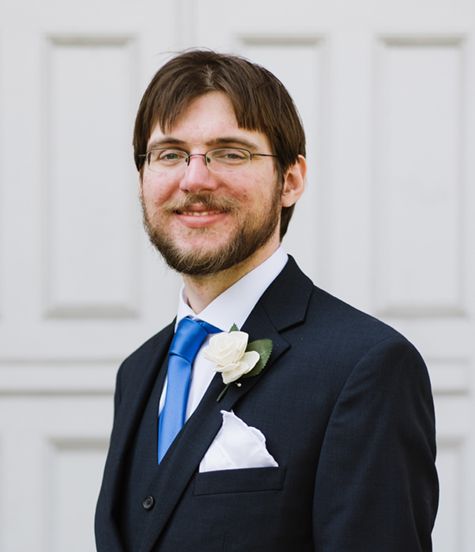Early Career Scientist Spotlight
Dr. Charles (Chip) Helms (he/him/his)
Cloud Dynamicist/Instrument Scientist
Mesoscale Atmospheric Processes Laboratory (612)
How did you end up working at NASA Goddard?
During my doctorate, I participated in the NASA Hurricanes and Severe Storms Sentinel (HS3) field campaign in 2013 and 2014 as a forecaster. The primary investigators for the campaign were Scott Braun and Paul Newman, both of whom work at NASA Goddard. Towards the end of my doctorate, when I was looking for the next step in my career, I came across the NASA Postdoctoral Program (NPP) and reached out to Scott Braun about working with him as he was one of the potential mentors listed. As it turned out, Scott already had an NPP fellow working for him and suggested I reach out to Gerry Heymsfield. Long story short, I was awarded an NPP fellowship working with Gerry as part of the High-Altitude Radar group. I have since transitioned from NPP to working for the University of Maryland’s Earth System Science Interdisciplinary Center (ESSIC).
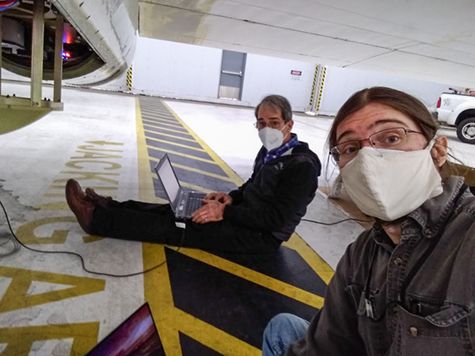
Credit: Chip Helms
Tell us about the research projects you are currently working on.
I’m currently working on a couple main projects with a couple smaller projects. I’m involved in the NASA Investigation of Microphysics and Precipitation for Atlantic Coast-Threatening Snowstorms (IMPACTS) as both a forecaster and a support scientist for the three weather radars aboard the NASA ER-2 aircraft. As part of my role supporting the radars, I help with pre-flight and post-flight activities during the field deployments (e.g., swapping out the hard drives) and, after the deployment, I help with the calibration and processing of the data before it is sent out to the science team. I also work on science using the IMPACTS data to investigate how smaller snow bands in winter storms are formed and maintained.
My other main project is working with the Global Precipitation Mission Ground Validation (GPM GV) program. I’m actually just wrapping up work examining the accuracy of snowflake shape measurements, but I’m also working to spin up my next project. There are a couple possibilities for my next GPM GV project, so I’m still trying to figure out which has the most promise.
As for my side projects, I’m working on getting funding to build a new dropsonde launch system for the NASA ER-2. A dropsonde is an in-situ sensor package with an attached parachute that is dropped out of an aircraft, and the launching mechanism needs to be specially designed for each aircraft. As part of this effort, I’ve been working with the National Center for Atmospheric Research (NCAR), which has built several dropsonde launch systems in the past. Dropsonde data featured heavily in both my masters and doctoral work, so I’m very excited about the potential applications for this instrument.
Finally, I’ve also been involved in the World Meteorological Organization’s 10th International Workshop on Tropical Cyclones. The goal of the workshop is to create a document every few years that summarizes the advancements in tropical cyclone research and prediction. My contribution has focused on documenting the improvements in satellite applications for predicting the formation of tropical cyclones.
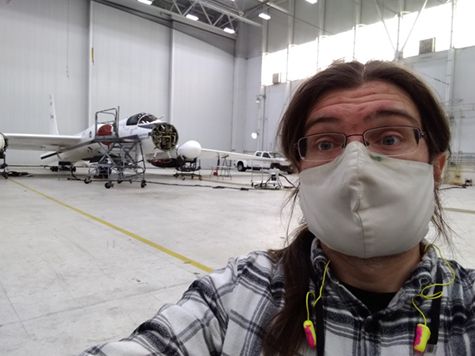
Credit: Chip Helms
What science question intrigues you the most?
I’ve always found myself drawn towards questions about how clouds interact with their environment, and I’ve also always been very interested in hurricanes and tropical storms (my family moved to Central Florida when I was a child, so I was fascinated by hurricanes starting at a young age). Unsurprisingly, my undergraduate, masters, and doctoral research all focused on clouds in tropical cyclones (specifically, in tropical cyclone formation). So ultimately, I suppose the science question that intrigues me the most is how the interactions between clouds and their environments influence the evolution of tropical disturbances and, eventually, how they impact whether the disturbance falls apart or becomes a hurricane.
What research accomplishment are you most proud of?
On the instrument side, I’m pretty proud of the progress I’ve made with the ER-2 dropsonde launch system. It can be intimidating as an earlier career scientist (and especially as a postdoc) to talk about instrument budgets and to lead small meetings that are attended by people who hold titles such as deputy director. Thankfully, the team I’m working with is full of very kind people with a lot of shared interests and that makes being in a leadership position a lot less stressful.
On the science side, there’s nothing quite like seeing the results of your doctoral work published in a journal. I was particularly pleased with how glowing the reviews were given how much of a struggle I went through when completing my dissertation.
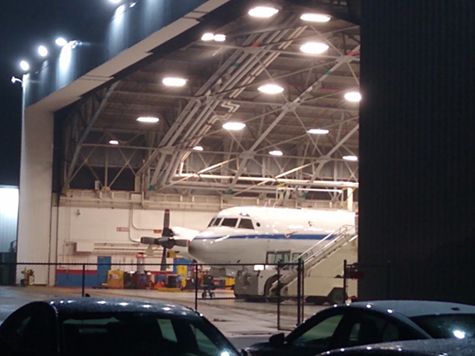
Credit: Chip Helms
If you were to expand your current research focus, what new topic(s) would you explore?
In the time since I finished my doctorate, I’ve enjoyed expanding my research focus by quite a bit. Prior to coming to NASA, I had very little experience with radar data and no experience with ice microphysics and these two topics now cover about 90% of what I work on these days. As for the next topic I’d like to expand to, I’ve been keeping an eye out for ways to incorporate passive microwave data, where the instrument is just collecting data at a given microwave frequency (in contrast to a radar, which actively sends out a signal at a microwave frequency and then listens for the response). Incorporating passive microwave into my work means I’d have a lot more satellite data to leverage when trying to answer science questions.
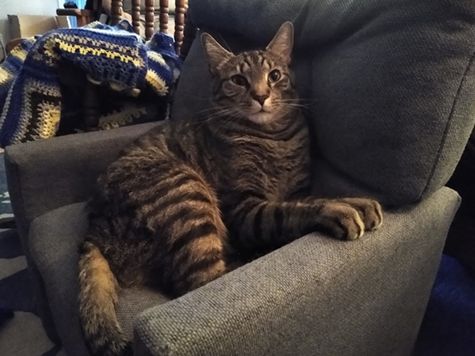
Credit: Chip Helms
What skills are most useful to you in your work, and where did you develop those skills?
The absolute most useful skill is, of course, scientific programming. I primarily program in the Interactive Data Language (IDL) programming language. I taught myself how to program as a sophomore in undergrad at the start my undergraduate research, which focused on writing an algorithm to track tropical disturbances in satellite data. That said, I’ve been working on using Python more since IDL being proprietary can cause issues when I need to run code somewhere other than our servers.
Outside of programming, being able to perform mathematical derivations has been a critical skill. I learned the fundamentals in the numerous mathematics classes I took as an undergraduate (my second major was in applied mathematics), but it was during my doctorate that I really started to develop it as a skill. I credit Dan Keyser, my professor for Synoptic Dynamics I, with teaching me the art of the mathematical derivation.
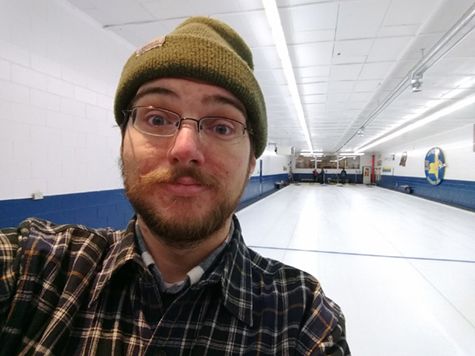
Credit: Chip Helms
What do you like to do in your free time?
It depends on the season. During the winter, I am an avid curler. I’m a member at the Potomac Curling Club, where I typically try to curl at least once a week. Outside of winter, I enjoy gardening. We have several flower beds in our yard that are rather overgrown, and my wife and I are gradually reclaiming them to plant vegetables (this year we planted okra, tomatoes, potatoes, and kale). Beyond the seasonal activities, I enjoy reading, video gaming, and have recently gotten into digital art (drawing and 3D modeling). My wife and I also enjoy ballroom dance (our favorite is bachata) and I also, of course, enjoy spending time with my one-year-old son, whose current favorite activity is to have me read books to him.
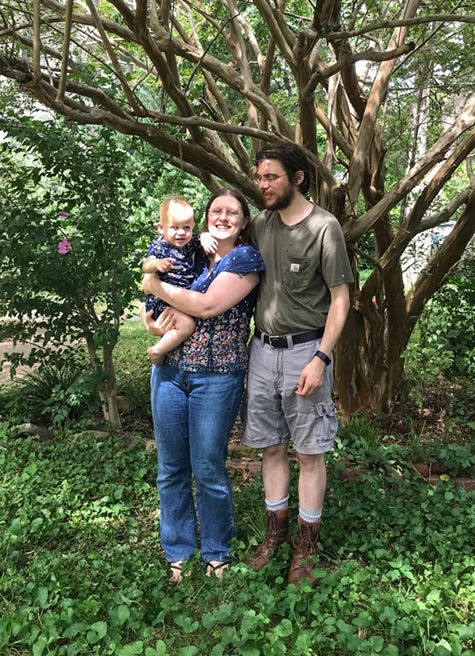
Credit: Arlene Helms
Biography
Home Town:
Virginia Beach, VA
Undergraduate Degree:
BS in Atmospheric Science/Applied Mathematics, University of North Carolina – Asheville, Asheville, NC
Post-graduate Degrees:
MS in Meteorology, Florida State University, Tallahassee, FL
PhD in Atmospheric Science, University at Albany, State University of New York, Albany, NY
